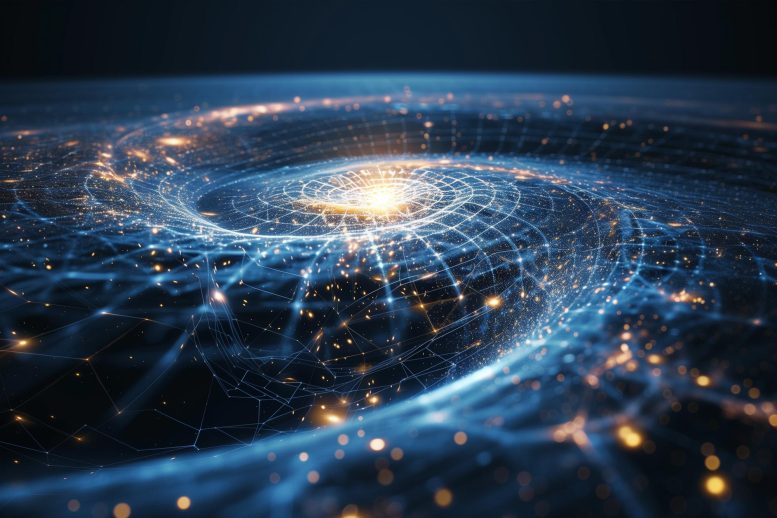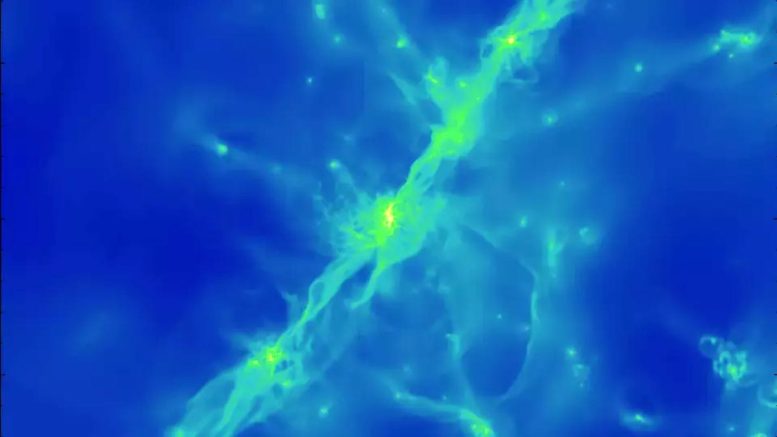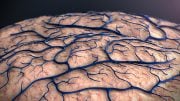
Researchers have advanced galaxy formation simulations, revealing early disk galaxy formation and solving the “missing satellites problem,” marking a significant step towards understanding the Universe. Credit: SciTechDaily.com
Astronomers can use supercomputers to simulate the formation of galaxies from the Big Bang 13.8 billion years ago to the present day. But there are a number of sources of error. An international research team, led by researchers in Lund, has spent a hundred million computer hours over eight years trying to correct these.
The last decade has seen major advances in computer simulations that can realistically calculate how galaxies form. These cosmological simulations are crucial to our understanding of where galaxies, stars, and planets come from. However, the predictions from such models are affected by limitations in the resolution of the simulations, as well as assumptions about a number of factors, such as how stars live and die and the evolution of the interstellar medium.
Collaborative Efforts Enhance Accuracy
To minimize the sources of error and produce more accurate simulations, 160 researchers from 60 higher education institutions – led by Santi Roca-Fàbrega at Lund University, Ji-hoon Kim at Seoul National University, and Joel R. Primack at the University of California – have collaborated and now present the results of the largest comparison of simulations done ever.
“To make progress towards a theory of galaxy formation, it is crucial to compare results and codes from different simulations. We have now done this by bringing together competing code groups behind the world’s best galaxy simulators in a kind of supercomparison,” says Santi Roca-Fàbrega, a researcher in astrophysics.
Three papers from this collaboration, known as the CosmoRun simulations, have now been published in The Astrophysical Journal. In these, the researchers have analyzed the formation of a galaxy with the same mass as the Milky Way. The simulation is based on the same astrophysical assumptions about the ultraviolet background radiation produced by the first stars in the Universe, the gas cooling and heating, and the process of star formation.
Insights from the CosmoRun Simulations
The new results allow the researchers to conclude that disc galaxies like the Milky Way formed very early in the history of the Universe, in line with observations from the James Webb Telescope. They have also found a way to make the number of satellite galaxies – galaxies orbiting larger galaxies – consistent with observations finally solving a problem well known in the community and known as “the missing satellites problem.”
In addition, the team has revealed how the gas surrounding galaxies is the key to realistic simulations, rather than the number and distribution of stars, which had previously been the standard.
“The work has been going on for the past eight years and has entailed running hundreds of simulations and using a hundred million hours of supercomputing facilities,” says Santi Roca-Fàbrega.
Now the journey continues to further refine the simulations of galaxy formation. With each technological achievement, Santi Roca-Fàbrega and his colleagues hope to add new pieces to the dizzying puzzle of the birth and evolution of the universe and galaxies.
“This is the start of more reliable simulations of galaxy formation, which in turn will help us to better understand our home galaxy, the Milky Way,” says Santi Roca-Fàbrega.
Reference: “The AGORA High-resolution Galaxy Simulations Comparison Project IV: Halo and Galaxy Mass Assembly in a Cosmological Zoom-in Simulation at z≤2” by Santi Roca-Fàbrega, Ji-hoon Kim, Joel R. Primack, Minyong Jung, Anna Genina, Loic Hausammann, Hyeonyong Kim, Alessandro Lupi, Kentaro Nagamine, Johnny W. Powell, Yves Revaz, Ikkoh Shimizu, Clayton Strawn, Héctor Velázquez, Tom Abel, Daniel Ceverino, Bili Dong, Thomas R. Quinn, Eun-jin Shin, Alvaro Segovia-Otero, Oscar Agertz, Kirk S. S. Barrow, Corentin Cadiou, Avishai Dekel, Cameron Hummels, Boon Kiat Oh, Romain Teyssier and The Agora Collaboration, Submitted, The Astrophysical Journal.
arXiv:2402.06202
In addition to Lund University, some 60 universities and organizations have participated in the work.










The term “super vacuum” (a “true vacuum”) is used here to designate regions of enhanced vacuum exerting greater pull than a normal vacuum carrying absolute zero temperature (sometimes called a “false vacuum”). Gravitational energy will be supposed here to deform the otherwise even coatings of positive energy on true vacuum quanta, with the consequence of imposing quadrupolar forms on the coatings, a sort of “tidal deformation” whereby the coating carries two opposing bulges of positive energy.
A normal vacuum supposed here cannot exist below some resolving limit defined by cosmologically available light (photons) with a well known property (E=hf) of requiring that photon energy density must increase with increased resolving power, as light carries “positive energy,” and cosmologically available light is inevitably limited by some fundamentally involved mechanism. The resolving limits of light delimit “sub-resolvable” regions of a “super vacuum” and this effect can be visualized as completely filling empty space with Planck-scale effectively spherical “true vacuum” quanta inevitably covered (“coated”) evenly by self-cohering “false vacuum” energy. The spherical geometry of such space quanta define them as spin-zero bosons.
A massless balance of positive and negative energy is carried by such space-filling quanta. Such quanta could be described as “spinless gravitons” and equivalently replaced with lightspeed strings of such quanta, all intersecting at a point as if arriving together from practically every significant direction, with every significant spin orientation, and further each massless gravity quantum (“graviton”) carries ultra-slowly rotating wave-deformed versions of such “space-time” quanta. One point of evidence for this take on quantizing gravity is the 30kpc wave observed with ALMA late last year and attributed to a “Dark Matter” effect.
Dirac had a similar hypothesis linking fundamental forces between basic particles to cosmological observables. At one point he aimed to explain the size of the observable universe as a sort of electron horizon, at least I’m told that much anyway. Apparently, it was one of many “Large Number Hypotheses” (LNHs) that seem to have been all the rage among well-funded exceptional quantum science mystics at one time, pre-WWII.
Dirac’s LNH apparently focused on using electrons, which are practically massless compared to nucleons, to cover for gravity and any other force to be involved, in his fantastically noble and somewhat famously failed cosmology-redefining quest. He should have used protons and hoped a simple galaxy size would emerge, of course, but in his possible defense it was the case that multiple galaxies were not a popular idea at the time. The ratio of forces between protons (10 to the 25th power) is thus, I imagine, forever to be disfavored by random factoid pushers, ignored to push out some bigger number tied to the electrons liked so much by Dirac (“10^42” is popular), or electron-proton combinations (usually “10^39,” somehow relevant despite that nature covered that case already with hydrogen), instead.